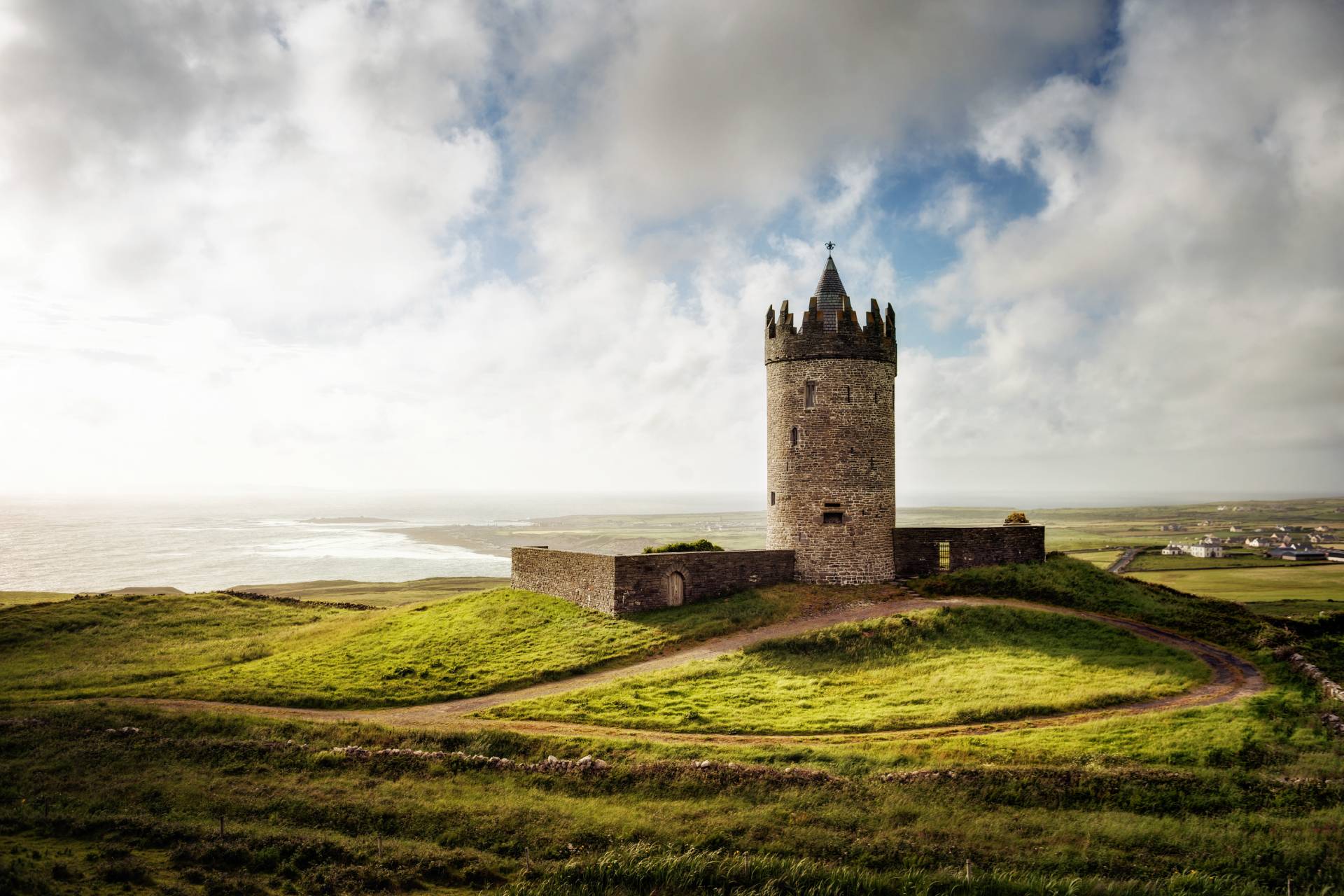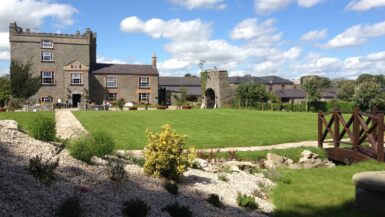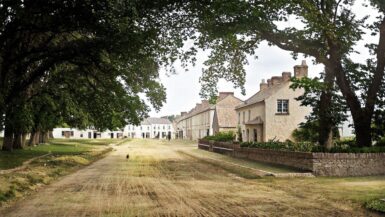Doonagore Castle, situated in Doolin, County Clare, has a rich and interesting history dating back to the 14th century. The castle was first built in the 1300s on the site where Doonagore Castle stands today. However, the current castle we know today was constructed in the 16th century using sandstone sourced from a quarry in Trá Leachain, also known as ‘Flaggy Beach’. Unlike most castles in the region which were built using limestone, Doonagore Castle stands out for its use of sandstone.
The castle was granted to Sir Turlough O’Brien of Ennistymon in 1582 after it was surrendered to the British Crown. During the Spanish Armada retreat in 1588, one of the fleeing Spanish ships was shipwrecked off the coast of Doolin, and 170 survivors were captured by the High Sheriff of Clare, Boetius Clancy, and hanged either at Doonagore Castle or on a nearby hill known as Cnocán an Crochaire, which translates to ‘Hangman’s Hill’.
By the early 1800s, Doonagore Castle had fallen into disrepair until it was repaired by Counselor Gore, leading to the castle gaining the name ‘Gores Castle’. Although the family carried out further work in the early 1800s, it had deteriorated again by the mid-19th century. In the 1970s, Doonagore Castle was restored by architect Rex MacGovern for John Gorman, an American buyer who had made his fortune in the cigar business. The Gorman family still owns the castle to this day.
Despite its tumultuous past, Doonagore Castle has become a popular tourist attraction in recent years, drawing visitors from around the world. The castle is perched on a hilltop, offering stunning views of the Atlantic Ocean and the Aran Islands. While the castle is not open to the public, visitors can still enjoy the picturesque views from the surrounding area, which is easily accessible by foot and is a short walk from the charming village of Doolin.
In conclusion, Doonagore Castle’s history spans centuries and is a testament to the skill and craftsmanship of the builders who constructed it using sandstone in the 16th century. The castle has played a significant role in the region’s history, from its ownership by Sir Turlough O’Brien to its use as a hanging site for Spanish Armada survivors. Although it has fallen into disrepair over the years, Doonagore Castle has been lovingly restored and has become a popular destination for tourists visiting the beautiful and historic County Clare.






Leave a reply